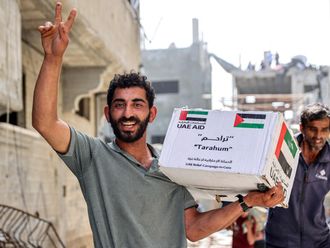Islamic insurgents killed 14 people in a brutal attack outside Algiers, trapping the victims at a fake roadblock, then killing them and burning their vehicles, journalists in the region said.
The Thursday night attack occurred at Oued Djerma in theLarbaa region some 30 kilometers southwest ofthe Algerian capital, according to the journalists.
Attackers struck just hours after President AbdelazizBouteflika made a speech marking the first anniversary on Friday of hisre-election to office. In the speech he said that security had "largely been re-established" after more than a decade of violence in this North African nation.
Bouteflika laid out the effects of the violence, in which he said 150,000 people had been killed and had cost the nation US$30 billion indamages.
No one claimed responsibility for the attack.
However,Islamic insurgents have for years used fake roadblocks torob travelers, usually killing them in the process.
The brutality of the attack and the method recalled thebloody killings and massacres that wracked Algeria startingin 1992, with violence peaking in the mid-1990s.
Continualoffensives by security forces have quashed most pockets ofinsurgents.
The region of Larbaa was long a major center for insurgentactivity by the radical Armed Islamic Group, or GIA, blamedfor numerous massacres in the 1990s.
However, the SalafistGroup for Call and Combat, or GSPC, has taken pre-eminenceover the GIA and could be operating in the Larbaa area.
TheGSPC has radicalized and pledged allegiance to the Al Qaedaterror organization.
The insurgency was triggered by an army decision to cancellegislative elections in 1992 to thwart the likely victoryof a Muslim fundamentalist party.
It snowballed into amajor insurgency and counter-violence by security forces.
Bouteflika vowed to make available US$55 billion over the next five years to help rebuild, sayingthat half would go to "improving the living conditions ofthe population."
Tens of thousands of Algerians fled their villages overthe years following attacks that targeted travellers, wholevillages and infrastructure - from railroad tracks toschools and public buildings.












